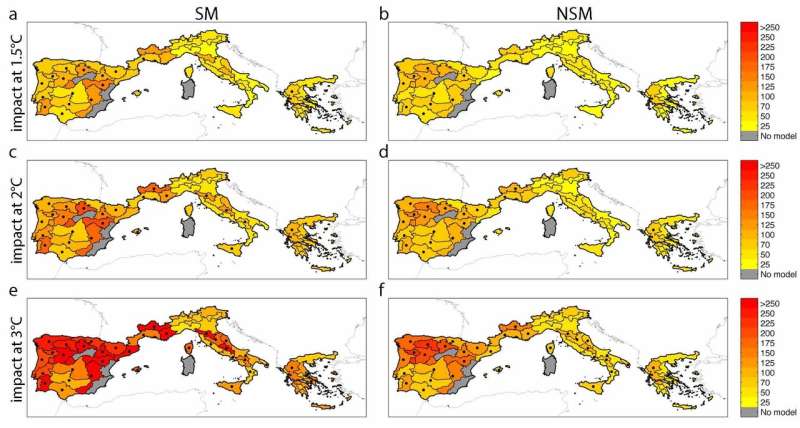Global warming increases potential wildfire damage in Mediterranean Europe

A study published in Nature Communications, led by researchers at the University of Barcelona in collaboration with other research institutions, shows that anthropogenic warming will increase the burned areas due to fires in Mediterranean Europe, and that this increase could be reduced by limiting global warming to 1.5 ºC. The higher the warming level, the larger the increase of the burned area is.
"To draw this conclusion, we combined regional climate projections with several empirical models linking the summer burned area to key climatic drivers," notes Marco Turco, UB researcher and first author of the study. "These results support the statement of the Paris Agreement (2015) that reports that limiting the temperature increase to 1.5 ºC would "significantly reduce the risks and impacts of climate change," says the researcher.
Fire seasons in 2017 and 2018 have been unusually high in several regions in Europe, with large wildfires in Greece, Portugal and Sweden, associated with intense droughts and heatwaves. These fires caused economic and ecological losses, and even human casualties.
Marco Turco and his team used a series of regional climate models to project burned area in Mediterranean Europe, taking into account how the climate-vegetation-fire relationship will change under different scenarios due other factors such as droughts. The authors find that, with a 1.5 º C global warming, the burned area could increase by 40 percent compared the projections that do not account for future warming (mainly in the Iberian Peninsula). If warming is at 3 ºC, it would increase by 100 percent.

"These results, combined with the increase in societal exposure to large wildfires in recent years, call for a rethinking of current management strategies. Climate change effects could overcome fire prevention efforts, implying that more fire management efforts must be planned in the near future," says Marco Turco, researcher in the Group of Analysis of Adverse Weather Situations (GAMA) of the University of Barcelona, led by Carme Llasat, lecturer at the Department of Applied Physics of the UB. The development of climate-fire models is crucial to identify key actions in adaptation strategies. In particular, combined with seasonal climate forecasts, these offer an under-exploited opportunity to prevent and reduce the fire impact of climate adverse conditions.
More information: Marco Turco et al, Exacerbated fires in Mediterranean Europe due to anthropogenic warming projected with non-stationary climate-fire models, Nature Communications (2018). DOI: 10.1038/s41467-018-06358-z
Journal information: Nature Communications
Provided by University of Barcelona




















